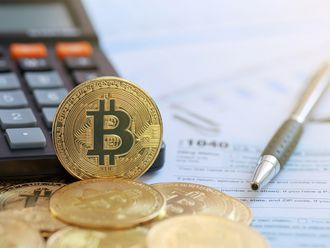There are many aspects of our daily lives that the credit crisis post 2008 has the dubious distinction of being responsible for — from the massive uncertainty that it has fostered in the lives of individuals and nations to the almost permanent change in geopolitical equilibrium.
But, to the question of whether there was a single reason for the credit crisis, the answers are vague. Was there, instead, a sprawling and interlinked set of causes for it? Which governmental agency or corporate body was responsible?
Answers to such basic questions of what led to the crisis are still contentious. Predictably, authors of books on such matters have proliferated as well. In an interesting exercise, Professor Andrew Lo from MIT has reviewed 21 books — 10 academic, 10 popular and one governmental report — on the subject and provided a summary of their claims.
Explanation 1: "Bad" beliefs caused the housing prices boom and all that followed.
Usually, constrained supply and rising demand cause higher prices. In the real estate market, a series of expectations about future housing prices caused the housing bubble. Any cure against future bubbles must involve active intervention through monetary policy to signal expectations, and control and monitor the contagion of bad ideas.
Explanation 2: Instruments in the market that reduce "transparency" of information caused the crisis.
Instruments such as securitised products — e.g., Collateralised Debt Obligations — were traded thinly. As a result the market, which is a mechanism to transmit information about supply and demand, became opaque. Consequently, ignorance about the true nature of market dynamics accumulated. Eventually, when the true information about underlying economic troubles was revealed, trouble came rapidly.
Explanation 3: Banks and rating agencies had misaligned incentives.
Banks had an "originate-to-distribute" model, wherein they originated the loans, packaged them and resold them to other customers. That they didn't hold on to the loans on their books often and had weak incentives to divulge the full and true extent of the risks involved has led to allegations of criminality.
One of the perils of this explanation is that many of the banks seem to have held on to many of the toxic assets as well. Not to discount fraud and criminal lending practices, the idea that misaligned and venal incentives were the sole causes of the crisis is difficult to sustain as the only explanation.
Explanation 4: Corruption led to institutional collapse
Anecdotal evidence shows that individuals with little or no net worth bought and flipped houses, well into the hundreds of thousands of dollars. This excessive behaviour emerged through a systemic decline in oversight. Yet, questions remain on both sides of the transaction: predatory lending by the banks found happy company in the presence of predatory borrowing. This all-round malfeasance, argues one school of thought, led to lack of willingness to "rock the boat". The chief culprits here were the "too big to fail" banks — who arguably relied on the knowledge that they would be bailed out.
Explanation 5: Deregulation caused the crisis.
Another view looks at the "large" scale picture and sees a perspective that is intimately tied with the internet dotcom bubble. As that earlier bubble burst, governmental authorities intervened to dismantle regulatory apparatuses and legalise large scale financial innovation with little understanding of how it would manifest. In a Marxist sense, "internal contradictions of capitalism" and the tenuous linkages between capital and credit were exacerbated by bad policies.
Explanation 6: Rise of the American oligarchy
A new class of financial "masters of the universe" worked to capture regulatory bodies and aligned these organisations with their own incentives. As a result, the political process was actively infiltrated through their donations and lobbying. The ideological temperament of the country was radically changed over the past 30 years; and the financial sector became the most powerful force in the American market place. This is a story of active distortion of public authority to serve private gains of a small group.
Explanation 7: The long arm of inequality caused the crisis.
Over the past 40 years in the US, rising education costs and unequal access to higher learning have created an under-class. Facing rising structural fault lines, the political elite "bribed" the electorate through weaker credit policies and easier housing financing schemes. Couple this with rising capital inflow from export oriented Asian countries — a perfect recipe for a credit bubble was ready.
These explanations reveal that the credit crisis remains an unusually complex phenomenon that still needs to be studied and understood. If there is any lesson from Professor Lo's exercise it is that any one-size-fits-all glib answer is likely to be not just incomplete, but also false.
The columnist works for a major European investment bank in New York City. All opinions are personal and don't reflect any institutional perspectives.












